


Wearable medical devices significantly enhance patient empowerment by providing real-time health monitoring, facilitating effective communication with healthcare providers, and promoting proactive health management. These devices enable individuals to meticulously track vital metrics, actively engage in their care, and make informed decisions. Such capabilities ultimately lead to improved adherence to treatment protocols and, consequently, better health outcomes. The implications of this technology are profound, as they not only foster individual responsibility in health management but also bridge the gap between patients and healthcare professionals.
Wearable medical devices are at the forefront of a healthcare revolution, empowering individuals to take unprecedented control of their health. By providing real-time data on vital metrics, these innovative tools not only enhance patient engagement but also facilitate the self-management of chronic conditions, ultimately leading to improved health outcomes.
As the adoption of these technologies accelerates, however, it is crucial to address questions regarding their effectiveness and the challenges users may encounter in fully leveraging their potential.
bioaccess® excels in providing rapid clinical research services tailored for medical devices, leveraging its strategic presence in Latin America, particularly Colombia. This region offers significant competitive advantages for first-in-human clinical trials.
With the ability to secure ethical approvals in just 4-6 weeks—substantially faster than the average FDA 510(k) decision time of approximately 5 months—bioaccess® effectively reduces the time to market for innovative wearable technologies.
Colombia's medical system, recognized as one of the finest globally, ensures high-quality care for individuals and facilitates efficient recruitment, with over 95% of its population benefiting from universal health services. This expedited process enhances participant enrollment by 50%, supporting Medtech, Biopharma, and Radiopharma companies in their pursuit to swiftly introduce products that enhance care and outcomes.
Furthermore, Colombia's R&D tax incentives significantly bolster the financial viability of clinical trials in the region.
As industry leaders underscore, the capacity to conduct swift clinical trials is vital for advancing healthcare solutions, ensuring that individuals gain access to innovative technologies without unnecessary delays. Additionally, leaders in the Medtech sector have noted that rapid clinical trials not only facilitate prompt access to new technologies but also improve overall health outcomes.
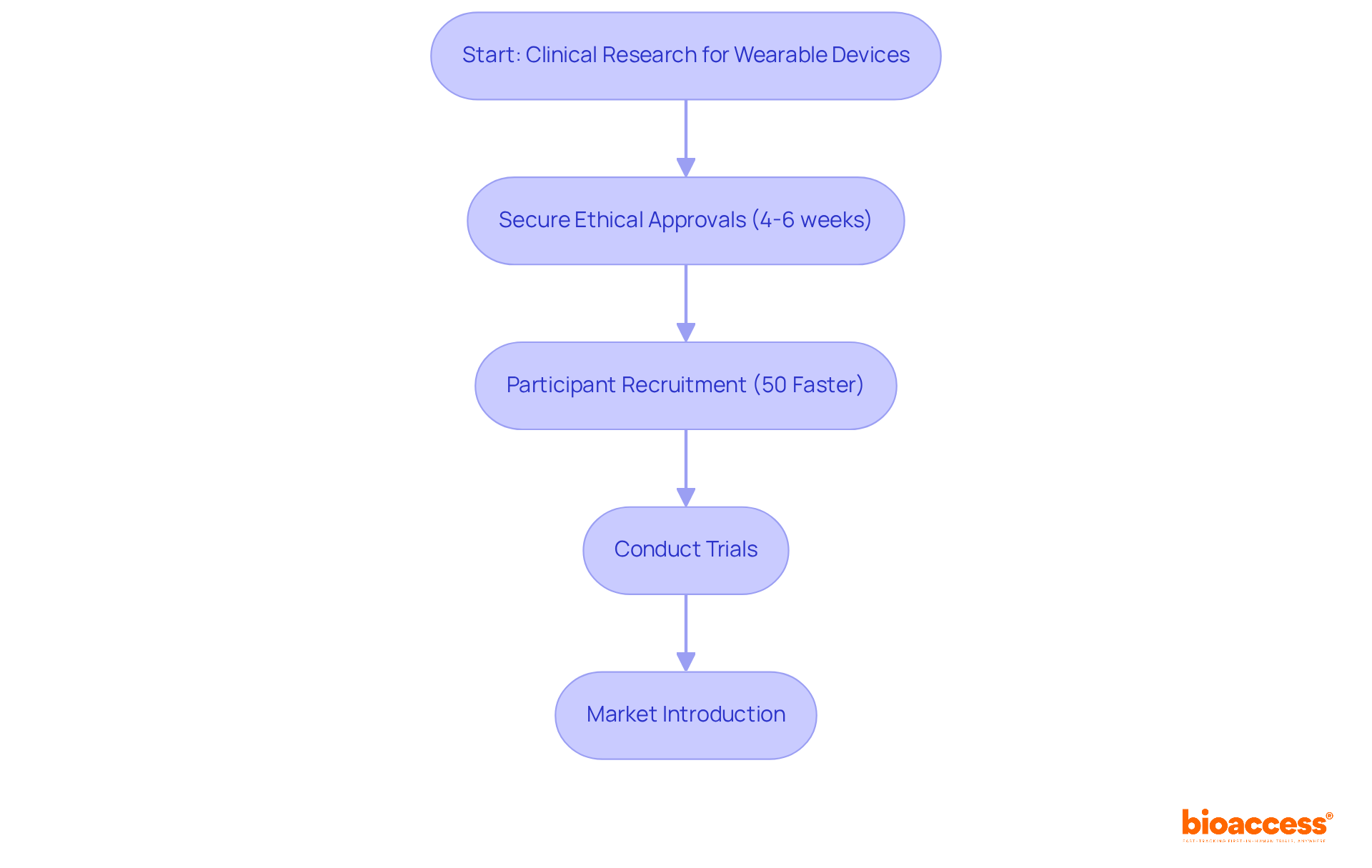
Wearable medical devices are essential for enhancing user engagement as they provide real-time feedback on vital wellness metrics. By enabling individuals to monitor their vital signs, activity levels, and other wellness indicators, wearable medical devices foster a sense of ownership over their health. This heightened engagement correlates with improved adherence to treatment strategies, as individuals take a more proactive approach to managing their well-being.
Studies indicate that individuals who actively interact with their medical data are significantly more inclined to make informed decisions regarding their care. For instance, research demonstrates that users of connected technology exhibit a 50% increase in medication compliance compared to those who do not utilize such devices.
Furthermore, expert insights reveal that immediate wellness feedback not only motivates individuals to adhere to recommended routines but also enhances their overall health, leading to fewer hospital admissions and better management of chronic conditions. The integration of wearable medical devices into healthcare represents a transformative approach to individual empowerment, ultimately fostering improved wellness management and outcomes.
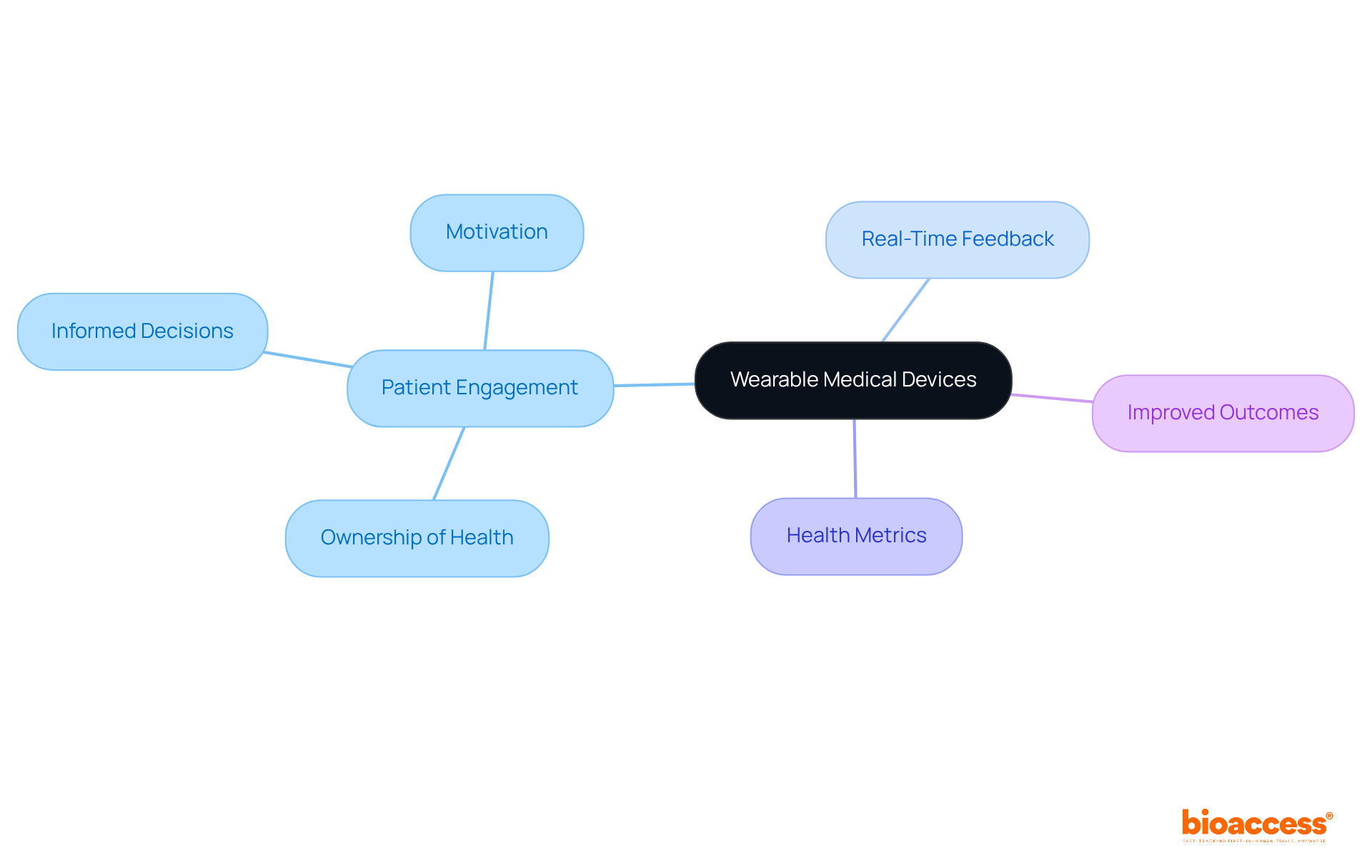
Wearable medical devices empower continuous monitoring of well-being, allowing patients to track vital metrics such as heart rate, blood pressure, and glucose levels in real time. This immediate access to medical data allows individuals to recognize changes in their condition and seek timely medical advice when necessary.
For instance, wearable medical devices can alert users to irregular heart rhythms, prompting them to consult healthcare providers before complications arise. Such proactive wellness management not only enhances client engagement but also significantly increases the potential for early identification of medical issues, ultimately transforming the landscape of care.
Furthermore, long-term remote monitoring can improve outcomes by fostering self-competency, allowing individuals to take control of their well-being. As digital wellness evolves from a curiosity to a standard clinical tool, the integration of wearable medical devices and technologies like remote monitoring becomes essential, as they aid in swiftly detecting variations in vital signs, facilitating prompt physician intervention.
As noted by health technology leaders, ongoing wellness monitoring is crucial for empowering individuals and enhancing their overall care management.
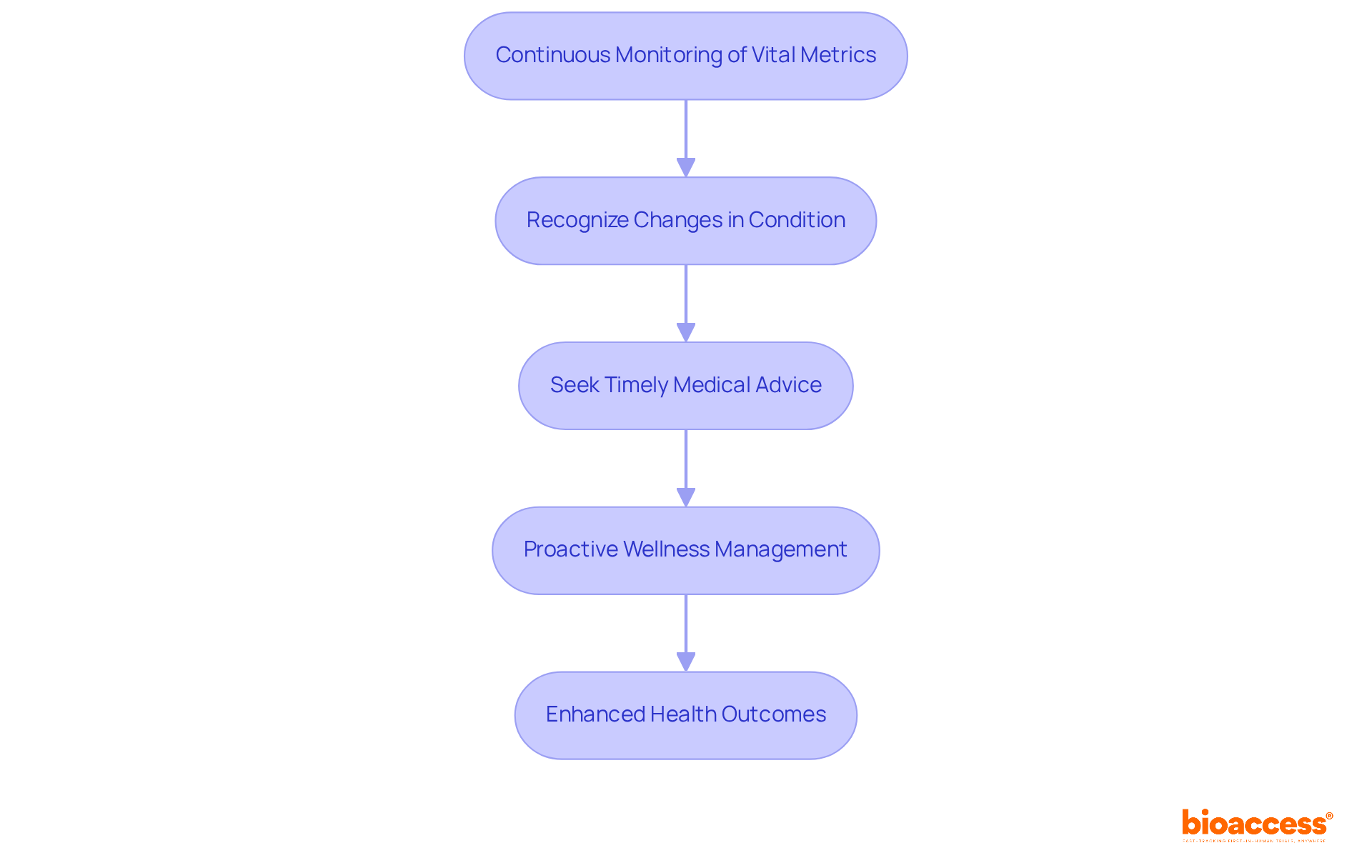
Wearable medical devices play a crucial role in significantly enhancing individual empowerment in managing chronic health conditions. Continuous glucose monitors (CGMs) exemplify this by enabling individuals with diabetes to track their blood sugar levels continuously throughout the day. This real-time monitoring facilitates timely insulin adjustments, which is crucial for maintaining optimal glycemic control. A study demonstrated that transitioning from self-monitoring of blood glucose (SMBG) to CGM resulted in a mean HbA1c reduction from 11.21% to 7.04%, showcasing the effectiveness of CGMs in improving diabetes management. Additionally, a clinically relevant decrease of 0.7% in A1c was observed after initiating CGM, further emphasizing their impact on glycemic control.
Moreover, CGMs have been linked to a substantial decrease in hypoglycemic events, with mild episodes dropping from 4.75% to 0.78% and severe episodes from 3.01% to 0.2% after implementation. This highlights the safety benefits of using wearable medical devices in the care of diabetes. Notably, there was a considerable 66% relative decrease in the number of individuals experiencing diabetes-related events, underscoring the importance of CGMs in improving safety for those affected. Furthermore, 16% of individuals with type 2 diabetes were able to stop their rapid-acting insulin before meals after adopting CGM, indicating a shift towards more effective management strategies.
The self-regulation abilities offered by smart devices not only improve individual autonomy but also lead to better overall wellness results. As medical services continue to advance, the incorporation of wearable medical devices into diabetes management is anticipated to expand, enabling individuals to take charge of their well-being more effectively. According to the American Diabetes Association, the total cost of diabetes in the U.S. was estimated at USD 412.9 billion in 2022, highlighting the economic burden of the disease and the need for effective management tools like CGMs. As Dr. Elizabeth L. Ciemins, a principal investigator, noted, "The integration of continuous glucose monitoring into diabetes care represents a significant advancement in enabling individuals to manage their condition more effectively.
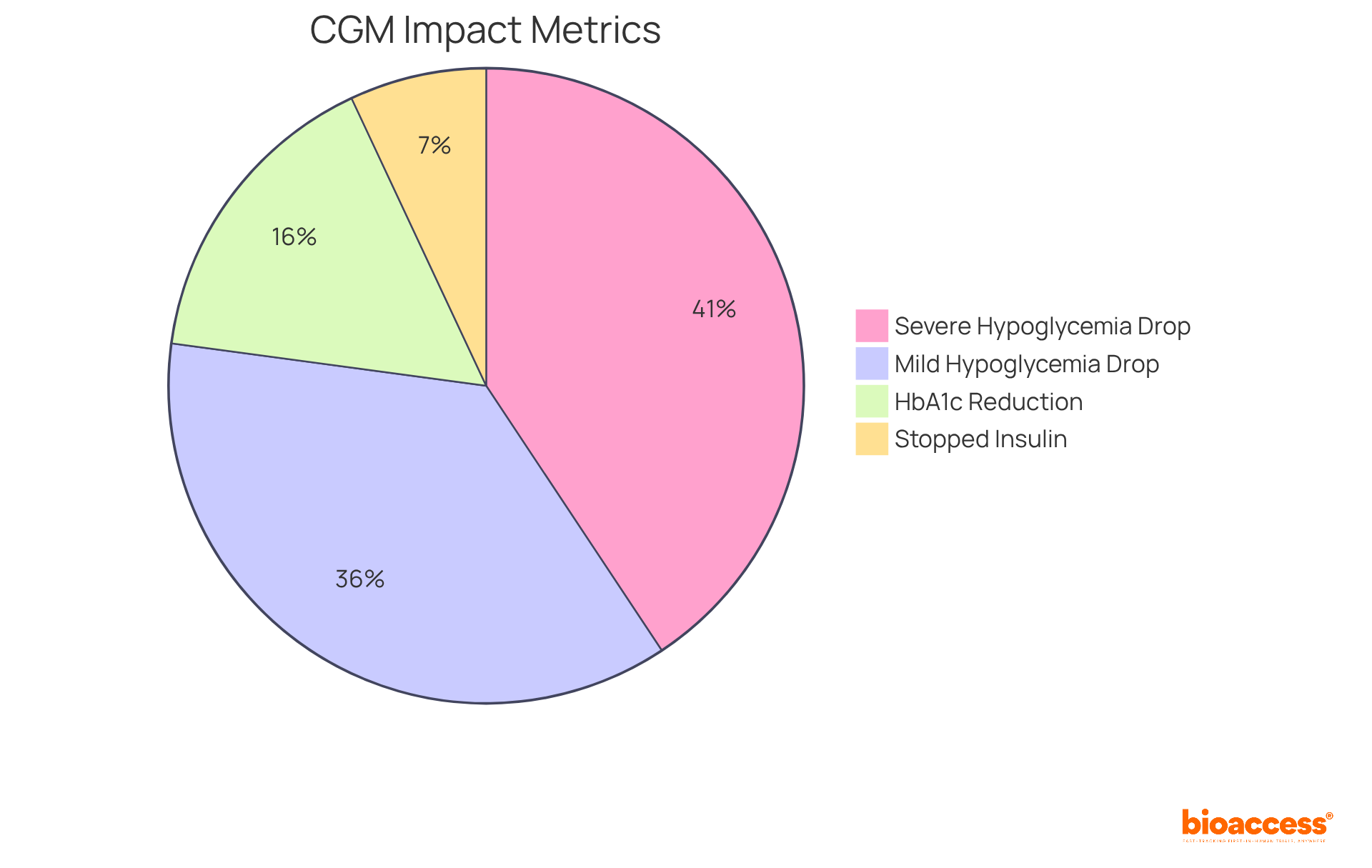
Wearable medical devices significantly enhance communication between patients and medical providers by facilitating seamless data sharing. Patients can effortlessly transmit their health metrics—such as heart rate and glucose levels—to their providers, fostering more informed discussions during consultations. This continuous flow of information empowers healthcare professionals to make timely adjustments to treatment plans based on real-time data.
For instance, individuals utilizing smart glucose monitors can share daily readings with their endocrinologists, enabling proactive management of diabetes and reducing the likelihood of complications. Furthermore, the continuous monitoring features of these devices support ongoing patient-provider interactions, which are crucial for effective treatment management.
Research indicates that these devices can identify conditions such as atrial fibrillation with over 90% precision, further demonstrating their capacity to enhance individual outcomes through improved monitoring and communication. By incorporating wearable medical devices into medical practices, providers can better engage individuals, leading to improved compliance with treatment plans and overall well-being management. This aligns with the broader context of interoperability in healthcare, underscoring the importance of efficient data sharing in enhancing user experience and satisfaction.
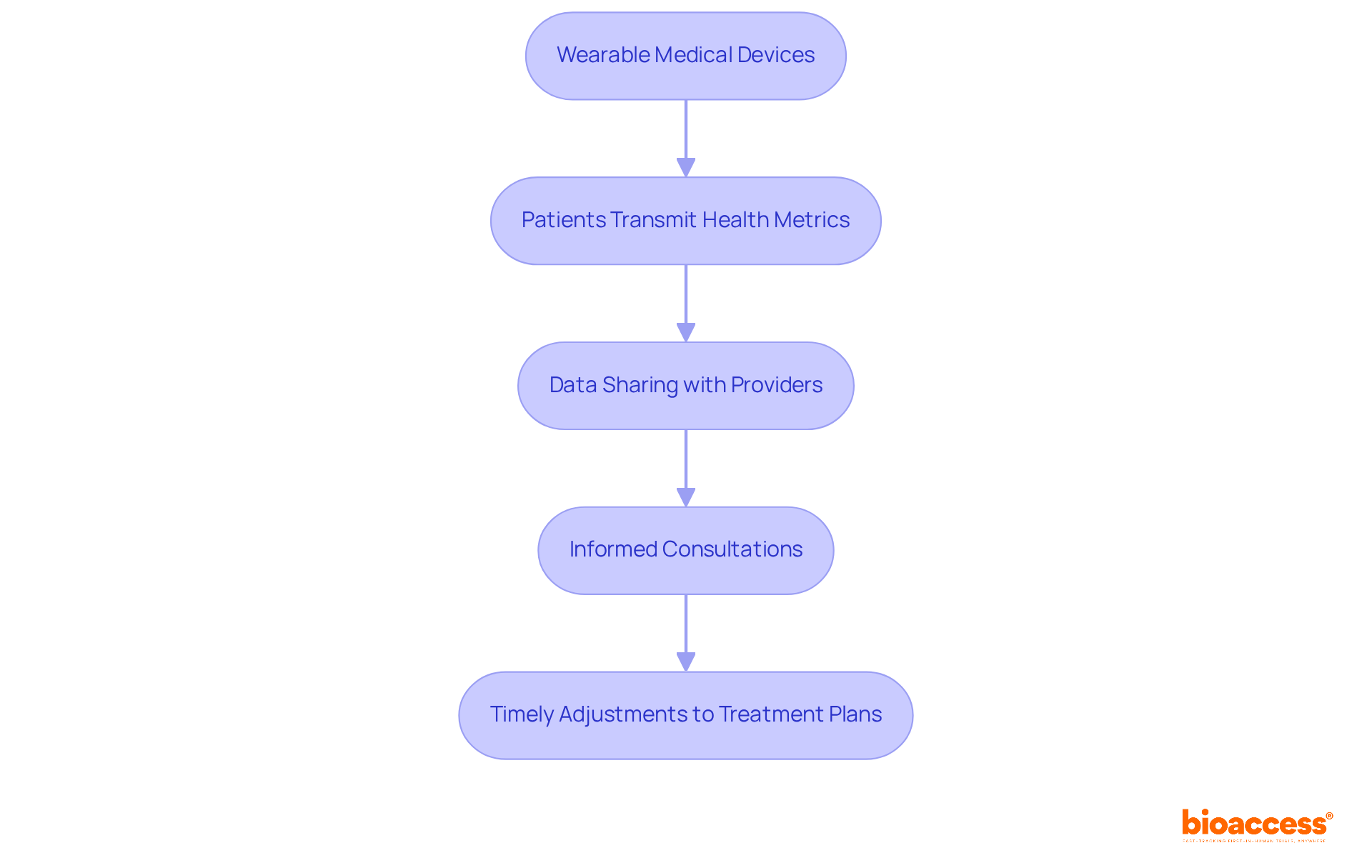
Wearable medical devices revolutionize user engagement by offering seamless access to health information, empowering individuals to take charge of their well-being. With real-time insights into vital metrics, users can make informed decisions regarding their lifestyle choices and treatment options. This accessibility fosters a sense of ownership and responsibility, prompting individuals to actively engage in their wellness journey.
Furthermore, the capacity to track wellness information over time enables users to identify trends and patterns, facilitating more meaningful conversations with healthcare professionals. For instance, individuals utilizing wearable medical devices to monitor their heart rate or glucose levels can share this data with their healthcare providers, leading to personalized treatment plans and improved wellness outcomes.
It is essential to acknowledge that some users may encounter frustration due to perceived inaccuracies in sleep or pulse monitors, which can hinder their engagement. Financial incentives, such as reductions in insurance rates, can also enhance individuals' willingness to utilize tracking devices, thereby increasing user motivation.
Experts in medical informatics emphasize that empowering individuals through data access not only boosts their involvement but also fosters a collaborative relationship with healthcare providers, ultimately aiding in better management and outcomes. Moreover, wearable medical devices can assist in tracking medication compliance for patients with chronic illnesses, underscoring their utility in comprehensive wellness management.
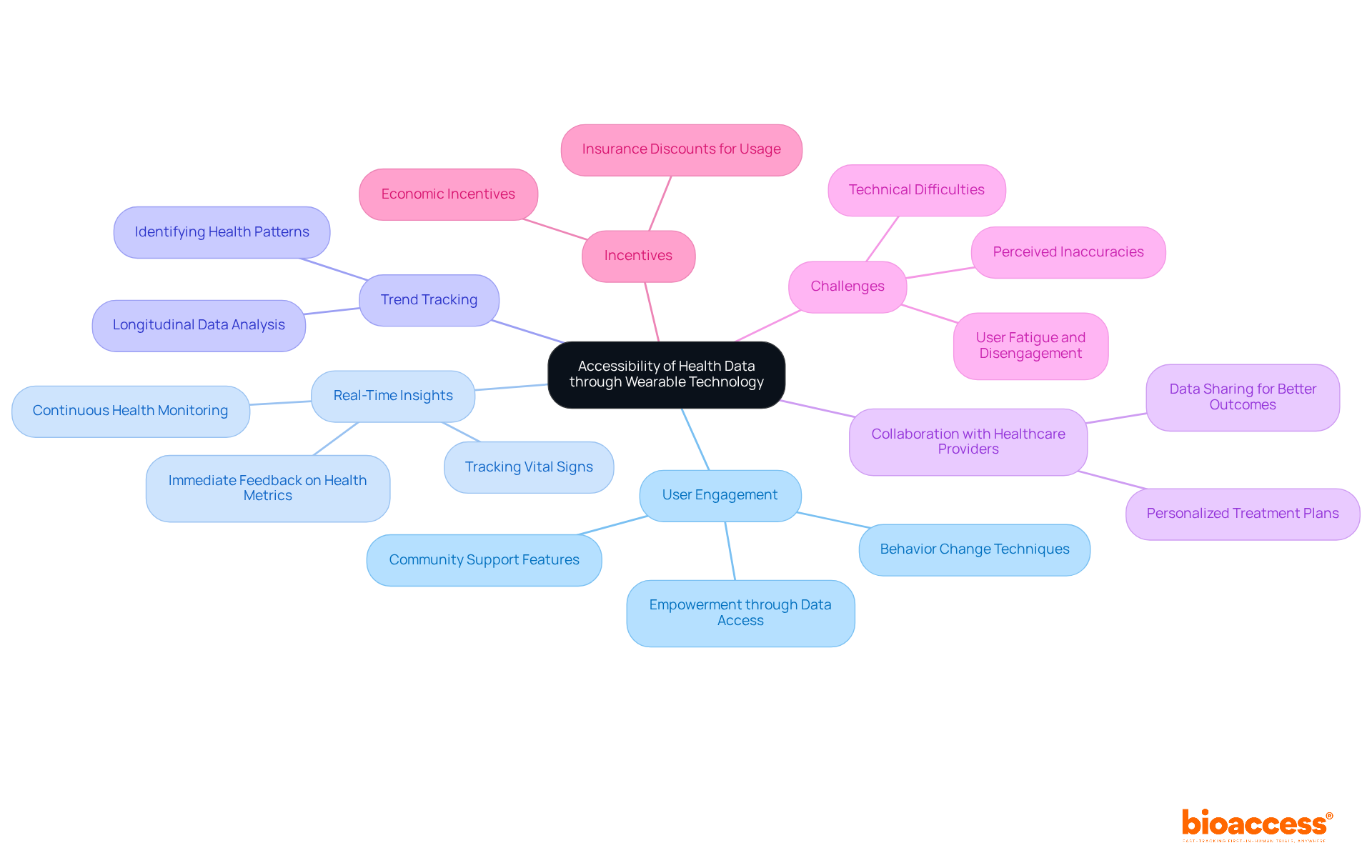
Wearable medical devices play a crucial role in driving lifestyle changes by providing users with actionable insights into their daily activities. For instance, fitness trackers not only motivate users to elevate their physical activity levels through daily step goals but also provide timely reminders to move. Furthermore, wearable medical devices monitor dietary habits and sleep patterns, allowing users to identify areas ripe for enhancement. By fostering awareness and accountability, wearable medical devices empower individuals to make healthier choices and adopt sustainable lifestyle changes.
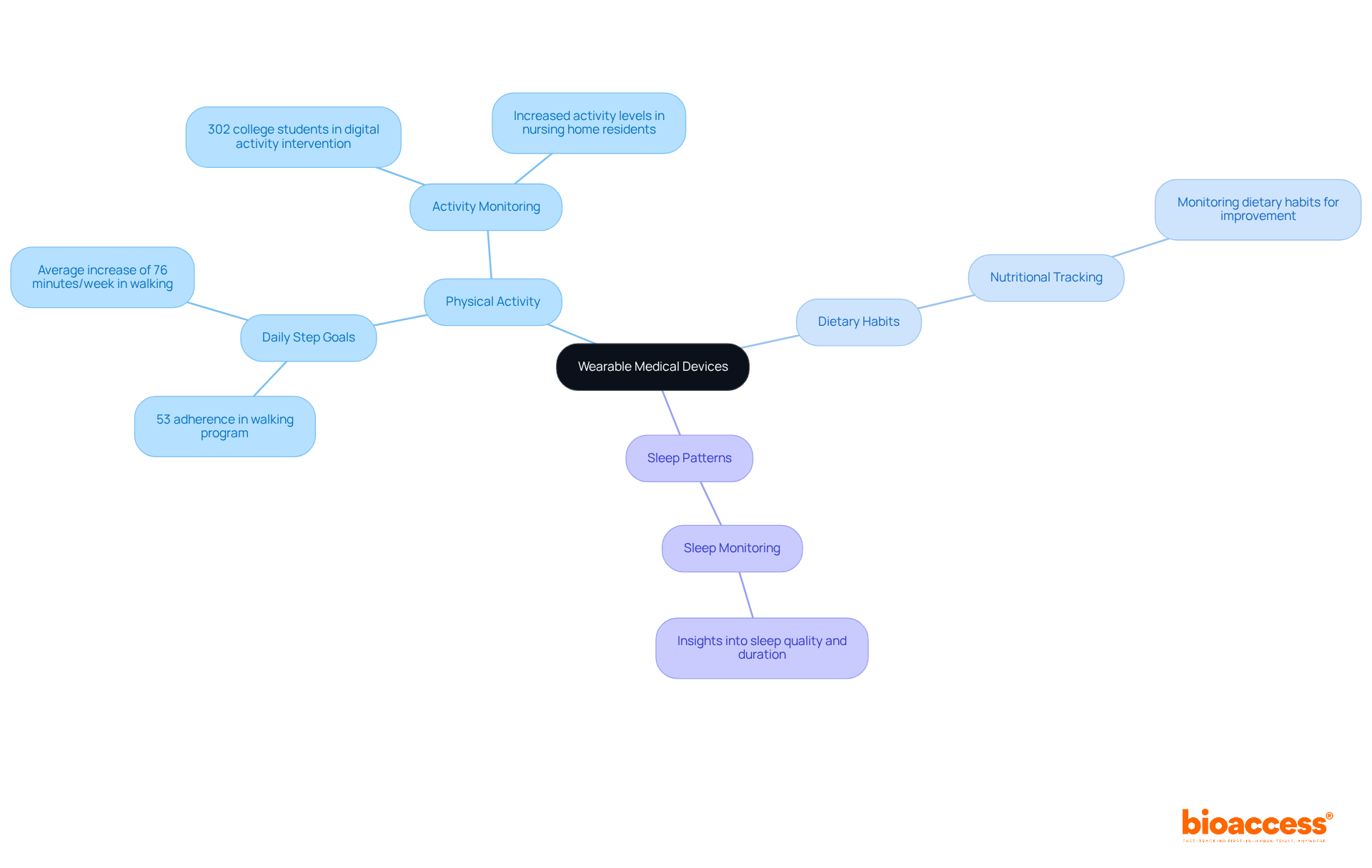
The cost-effectiveness of wearable medical devices in health management is increasingly acknowledged. By facilitating remote observation and minimizing the necessity for face-to-face appointments, wearable medical devices significantly reduce medical expenses for both individuals and providers. Continuous monitoring of chronic conditions, for instance, can prevent costly hospitalizations by enabling timely interventions. Moreover, the data collected by wearable medical devices empowers healthcare professionals to optimize treatment plans, which leads to more efficient resource utilization and improved outcomes for patients.
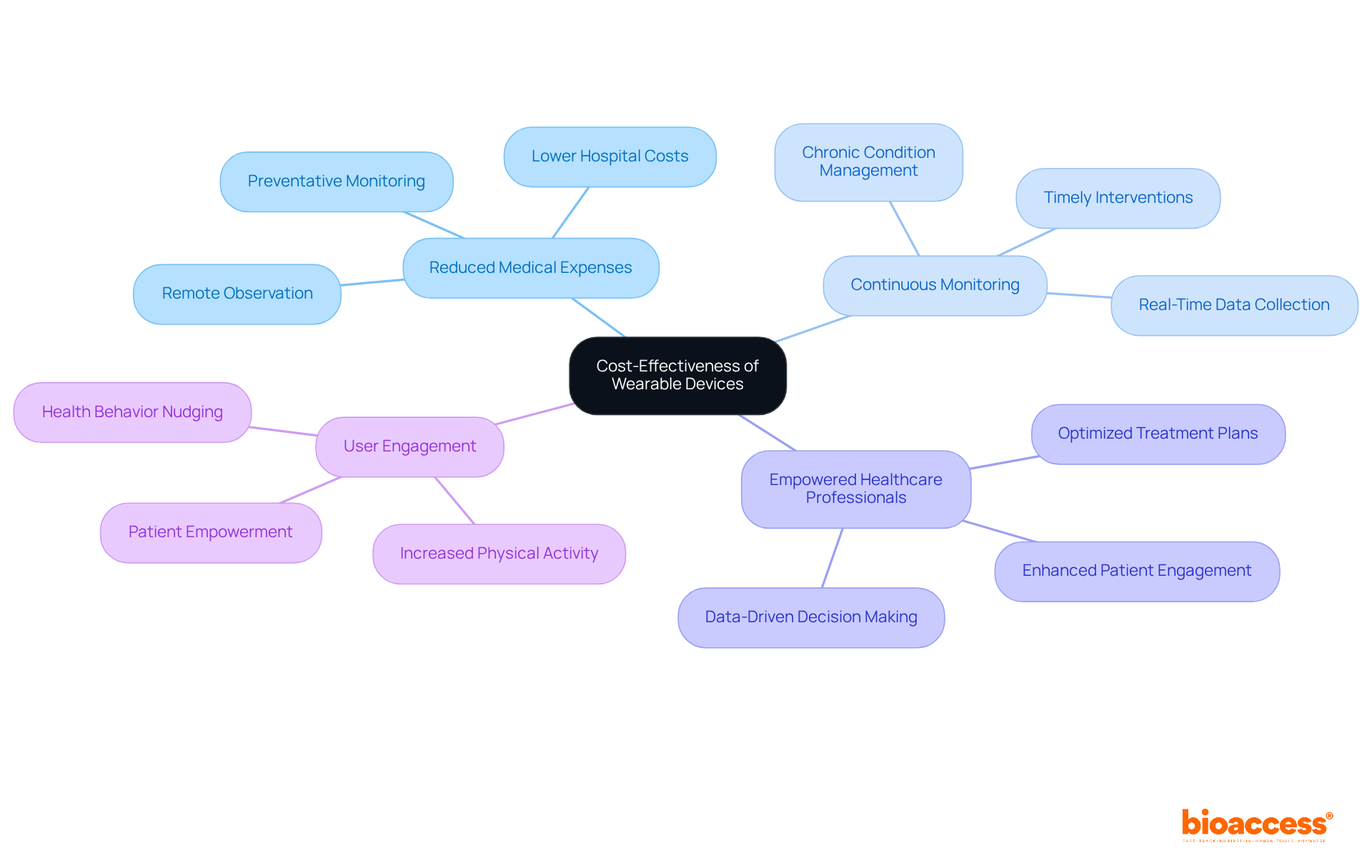
Wearable medical devices are transforming wellness management by encouraging proactive individual involvement and greatly improving medical outcomes. These wearable medical devices provide real-time information, empowering individuals to continuously monitor their health and make informed decisions regarding their care.
Research reveals that individuals utilizing wearable medical devices exhibit improved management of chronic conditions, with adherence to treatment plans increasing by up to 30%, as noted by the Journal of Medical Internet Research. For instance, users of wearable medical devices, such as continuous glucose monitors, have reported better diabetes management, leading to a notable decrease in A1C levels.
Furthermore, studies show that 88% of doctors endorse home monitoring with wearable medical devices, recognizing their potential to boost individual engagement and outcomes. As the adoption of wearable medical devices rises—projected to reach nearly 440 million units by 2024—their role in transforming medical care and enhancing patient results will become increasingly vital.
With 80% of users reporting reduced anxiety about their medical conditions due to the insights provided by wearable medical devices, according to the Consumer Technology Association, the future of medical services is gravitating toward a more personalized and data-driven approach. This shift is supported by the health technology market, which is expected to reach $60 billion by 2023. Additionally, the use of wearable medical devices could yield global cost savings exceeding $200 billion in the healthcare sector, underscoring their significance.

Wearable medical devices are fundamentally transforming the healthcare landscape by empowering patients to take control of their health and wellness. These technologies not only facilitate real-time monitoring of vital metrics but also enhance patient engagement, leading to improved health outcomes. By fostering a proactive approach to personal health management, wearable devices promote better communication between patients and healthcare providers, ensuring that individuals are more informed and actively involved in their treatment plans.
Throughout this discussion, key insights have underscored the multifaceted benefits of wearable medical devices. From enabling continuous health monitoring and self-management of chronic conditions to improving communication channels and encouraging lifestyle changes, these devices play a pivotal role in enhancing patient autonomy. Evidence demonstrates that individuals who utilize wearable technology experience greater adherence to treatment regimens, resulting in notable improvements in their overall health and well-being.
The significance of integrating wearable medical devices into healthcare cannot be overstated. As the adoption of these technologies continues to rise, it is crucial for patients, providers, and policymakers to recognize their potential in transforming health management. Embracing wearable technology not only promotes individual empowerment but also contributes to a more efficient and effective healthcare system. By prioritizing accessibility and encouraging the use of these innovative tools, the path toward improved health outcomes becomes clearer, ultimately benefiting society as a whole.
What is bioaccess® and what services does it provide?
bioaccess® specializes in offering rapid clinical research services for wearable medical devices, with a strategic focus on Latin America, particularly Colombia.
What advantages does Colombia offer for clinical trials?
Colombia provides significant competitive advantages for first-in-human clinical trials, including the ability to secure ethical approvals in just 4-6 weeks, which is much faster than the average FDA 510(k) decision time of approximately 5 months.
How does Colombia's healthcare system support clinical research?
Colombia's healthcare system is recognized for its high quality, ensuring efficient participant recruitment with over 95% of the population benefiting from universal health services, which enhances enrollment by 50%.
What financial incentives are available for clinical trials in Colombia?
Colombia offers R&D tax incentives that significantly enhance the financial viability of conducting clinical trials in the region.
Why are rapid clinical trials important for healthcare solutions?
Rapid clinical trials are crucial for advancing healthcare solutions, allowing individuals to access innovative technologies without unnecessary delays and improving overall health outcomes.
How do wearable medical devices enhance patient engagement?
Wearable medical devices provide real-time feedback on vital wellness metrics, fostering a sense of ownership over health and leading to improved adherence to treatment strategies.
What impact do wearable devices have on medication compliance?
Studies show that users of connected technology experience a 50% increase in medication compliance compared to those who do not use such devices.
How do wearable medical devices empower patients in health monitoring?
Wearable devices allow continuous monitoring of vital metrics like heart rate and blood pressure, enabling individuals to recognize changes in their condition and seek timely medical advice.
What role do wearable devices play in early identification of medical issues?
Wearable medical devices can alert users to irregular heart rhythms, prompting timely consultations with healthcare providers, which enhances proactive wellness management.
How does long-term remote monitoring benefit patient outcomes?
Long-term remote monitoring fosters self-competency in individuals, allowing them to take control of their well-being and improving health outcomes by facilitating prompt physician intervention.